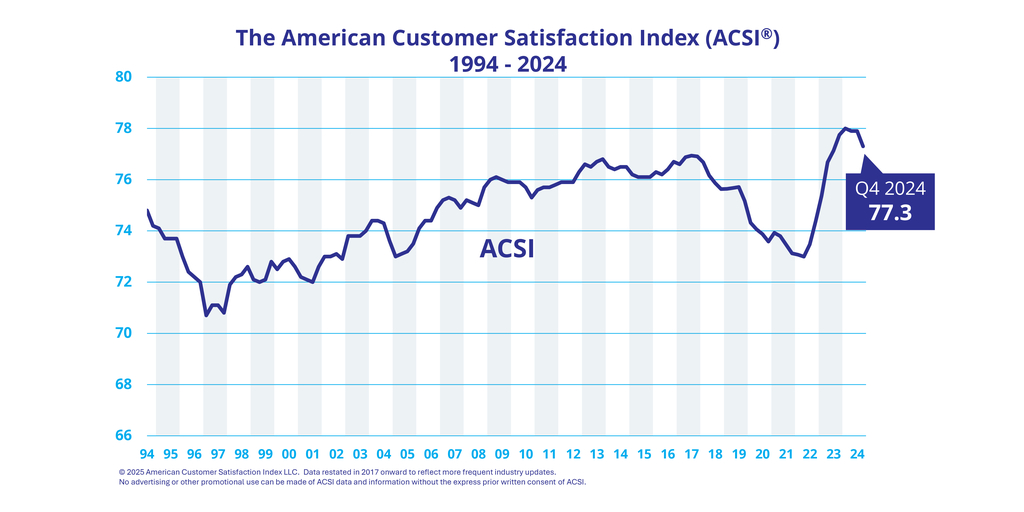Consumer Confidence Unveiled: ACSI Reveals Shocking Customer Satisfaction Trends for Q4 2024

In a recent report by the American Customer Satisfaction Index (ACSI), customer satisfaction in the United States experienced a slight downturn, dropping 0.8% to reach 77.3 in the fourth quarter of 2024. This marginal decline offers insights into the evolving landscape of consumer experiences across various industries.
The ACSI's quarterly measurement provides a critical snapshot of how businesses are meeting customer expectations. The 0.8% decrease, while seemingly small, signals potential challenges in maintaining high-quality service and product standards. Businesses across sectors will likely be closely examining this data to understand the underlying factors contributing to the slight dip in customer satisfaction.
Despite the modest decline, the overall satisfaction score of 77.3 still indicates a relatively stable customer experience environment. Companies will undoubtedly be motivated to address the subtle shifts in consumer sentiment and work towards improving their customer engagement strategies.
As businesses continue to navigate an increasingly competitive marketplace, maintaining and enhancing customer satisfaction remains a crucial priority for long-term success and growth.

